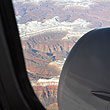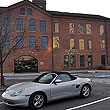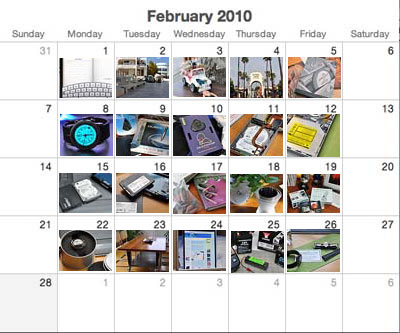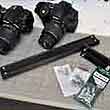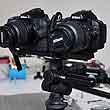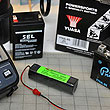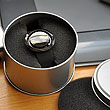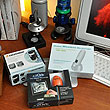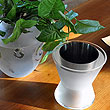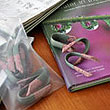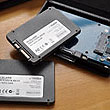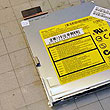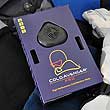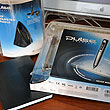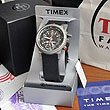Yesterday's article generated a few interesting questions from readers. Many
were wondering how we planned to trigger the two cameras. A few readers suggested elaborate rigs with dual-plungers. We had a much simplier solution: the remote trigger.
The D40 has five different shooting modes. The "quick response" remote trigger is the one we are going to use for this application.

Some were asking how we were going to make sure that everything would be level. We thought about line-levels and bubble levels. In the practice runs, we found that the simple circular bubble was the easiest to use. We planned to bring both with us to see how they performed out in the field.

In reviewing the 3-D setup, our resident expert indicated that the configuration was problematic because one of the D40 cameras had on the Camera Armor and a different grip. The protective skin and the grip raised the camera off the mount a little bit differently than the other D40. The difference in height would create a slight offset which would throw off the pairing.

We used aperture-priority and had the camera set at F22 for the deepest depth-of-field possible.
This is important because while the eye can only focus on a specific point at any given time, it will want to roam around the entire stereo image. The more out of focus the images are, the greater the problems the brain will have in trying to merge them (result:= headaches).


Now that we had acquired these high resolution image pairs, it was time to see if we could use them to create the 3-D effect. The basic principle behind seeing depth is to present a slightly different image to each eye. The "difference" is used by the brain to compute the depth information.

One of our editors said it is possible to see stereoscopic images on the computer screen without the use of specialized viewers. He said it was the same technique used to view those random-dot stereograms. It takes a little practice to get the technique down, but once mastered, will free the user from having to wear those silly glasses. The only side-effect is a headache if the user can't make the images merge properly...a small price to pay for this little mind-hack! We'll show you how in the next part of this series. [Permalink] -3D Nikon Rig FirstUse
|




